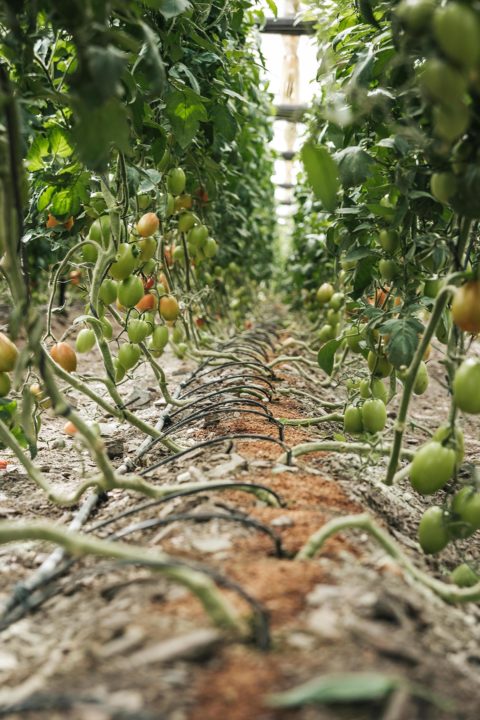Researchers Mapping Out Tomato Flavors Preferred by Consumers
 Using genetic mapping and metabolomics analysis, the Vineland Research and Innovation Centre and its collaborators at Laval University, Quebec, Canada, the University of Florida, and McMaster University in Ontario, Canada have identified the gene responsible for producing several important aroma chemicals, including the familiar tomato vine aroma associated with fresh tomatoes.
Using genetic mapping and metabolomics analysis, the Vineland Research and Innovation Centre and its collaborators at Laval University, Quebec, Canada, the University of Florida, and McMaster University in Ontario, Canada have identified the gene responsible for producing several important aroma chemicals, including the familiar tomato vine aroma associated with fresh tomatoes.
“Tomatoes, like many other plants, carry nitrogen-containing volatiles derived mainly from the amino acids leucine and phenylalanine, which were assumed to provide the nitrogen atom for these volatiles,” says David Liscombe, Ph.D., Vineland’s Research Scientist, Biochemistry and lead researcher for the project. “However, in our research, we found tomatoes produce nitrogenous volatiles in a unique way compared to other species – using cysteine as a source of nitrogen.”
Cysteine is an amino acid present in all organisms, and in plants, it plays a central role in converting sulfur from the environment into other amino acids and vitamins as well as flavor and defense-related chemicals.
“Well-known for its contribution to sulfurous chemicals like the pungent flavors in onion and garlic, we were surprised to find that cysteine is required to make all nitrogen-containing flavor volatiles in tomatoes, even those that do not contain sulfur,” explains Liscombe. “This is a very different way to make these chemicals compared to other plants.”
Vineland can now incorporate this important knowledge into its tomato breeding program to meet consumer preference for flavorful tomatoes.
These research findings have been published in the Proceedings of the National Academy of Sciences of the United States of America. The article “A flavin-dependent monooxygenase produces nitrogenous tomato aroma volatiles using cysteine as a nitrogen source” can be accessed at a cost here.
Funding for this research is provided by Genome Canada, the Ontario Ministry of Research and Innovation, Growing Forward 2, Ontario Greenhouse Vegetable Growers, and the Canada Foundation for Innovation (CFI). A Canada Graduate Doctoral Scholarship from NSERC supported Vineland’s graduate student Christine Kempthorne.









